All you need to know about horse bits
By: Pablo Imberti y Maribel Estefanell Posted: 30/06/2021
Communication between the rider and the horse for all kinds of equestrian activities, whether in sports or on equestrian holidays, is basic.
When the horse is being started under saddle, he’s taught to react to certain voice, leg or rein cues from the rider.
What is a horse bit?
The bit is one of the most important tools we have to communicate with the horse and transmit messages and guidelines to him when riding.
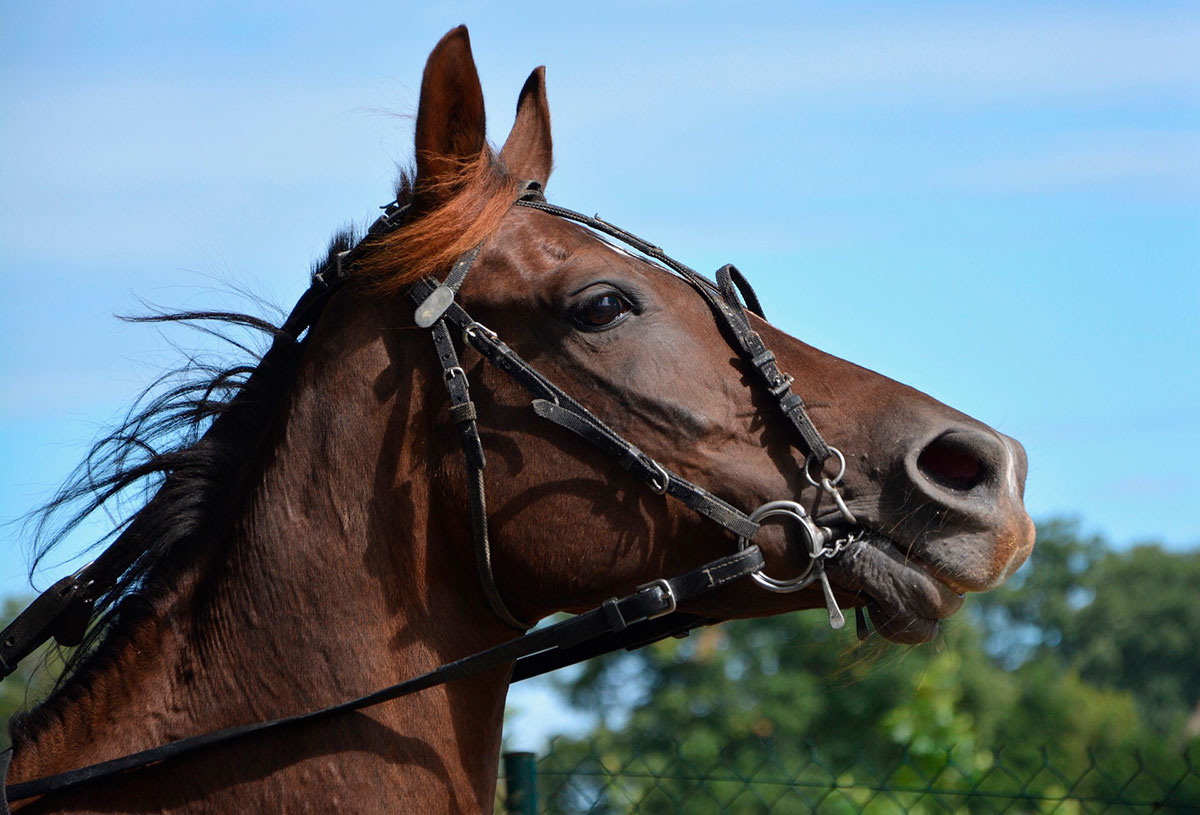
By definition, a "bit" is a piece of metal or other material that fits in a horse's mouth.
It is essential to choose the correct type of mouthpiece so that our horse can be relaxed and it will allow us to communicate what we want in each exercise.
Ideally, our horse should feel really comfortable in the bit we use and it should help him understand well the cues that the rider is giving.
As riders, we should choose the most suitable bit for our horse.
"An inadequate bit can lead to a number of physical problems"
These are some of signs that indicate that the horse is uncomfortable with the type of bit you are using: he lowers or shakes his head, or tries to run off.
There are two basic aspects that we must take into account when choosing the bit:
- The anatomy of the horse's mouth.
- The training level or stage he is in.
But that's not all, it's also important that the horse is relaxed and without behaviour problems. The trainer or rider should make good use of this tool.
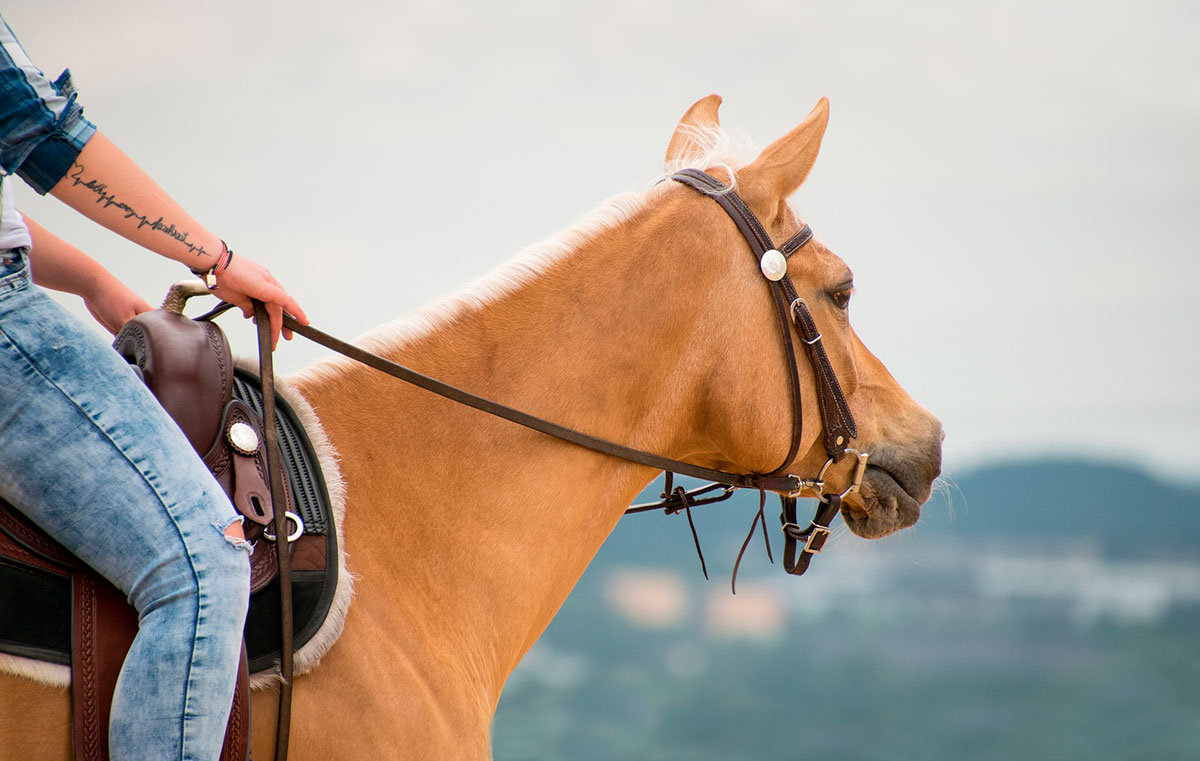
And what can we achieve by using the bit correctly and in what way?
Among other things, the rider must get the horse to stop, back up, and slow down from a walk, trot or gallop. And finally, to turn to one side and the other.
To get, for example, the horse to stop, the rider applies pressure on the mouth through the reins. When the horse stops, the rein pressure must be released immediately. That way, he will understand that his response was correct.
It is important to release the pressure the instant that the horse complies with the request, otherwise he will become confused and will not learn to associate the cue or pressure with the desired action.
At Ampascachi, we use this method when we train our horses. We apply the principles of Learning Theory and ethology.
Types of bits
We can say that there are two types of bits, which in turn have different varieties and shapes:
- The snaffle bit or Bridoon.
- The curb bit, which uses leverage.
The snaffle bit is used in early training, and then we will introduce the curb bit for “refining” the training and giving much more subtle rein aids.
While the snaffle acts on two points, the tongue and the corners of the mouth, the curb bit acts on four points: the tongue, the lips and corners of the mouth, the jaw and the roof of the mouth.
The snaffle bit is a direct action bit and it delivers equal, direct pressure to the horse’s mouth when the reins are pulled.
There are different types of snaffle bits, which we will see later, but what I want to highlight now is that they all have two basic elements – the rings where the reins will be attached, and the mouthpiece, which is a joined or non-joined bar that rests inside the horse's mouth.
Let's look at two examples: a ring snaffle bit and full cheek snaffle bit:
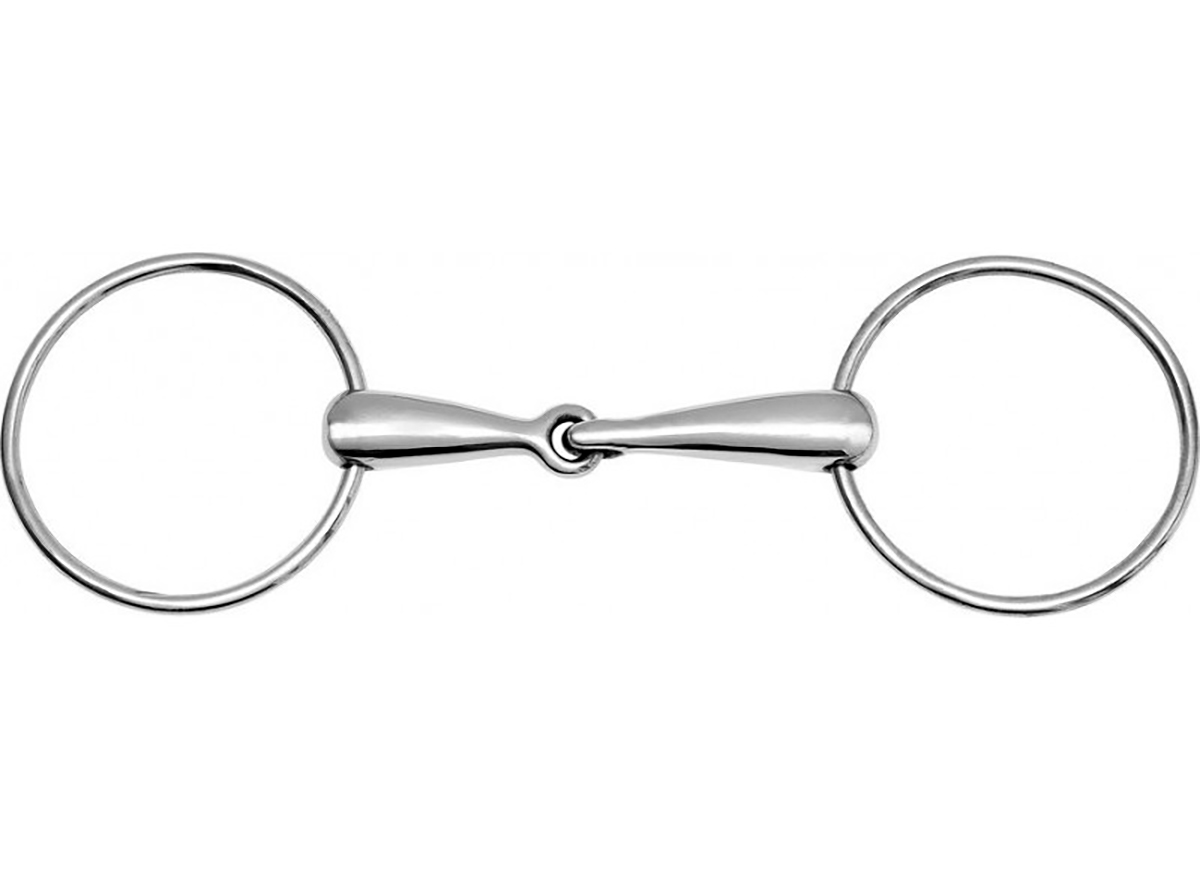
Ring snaffle bit
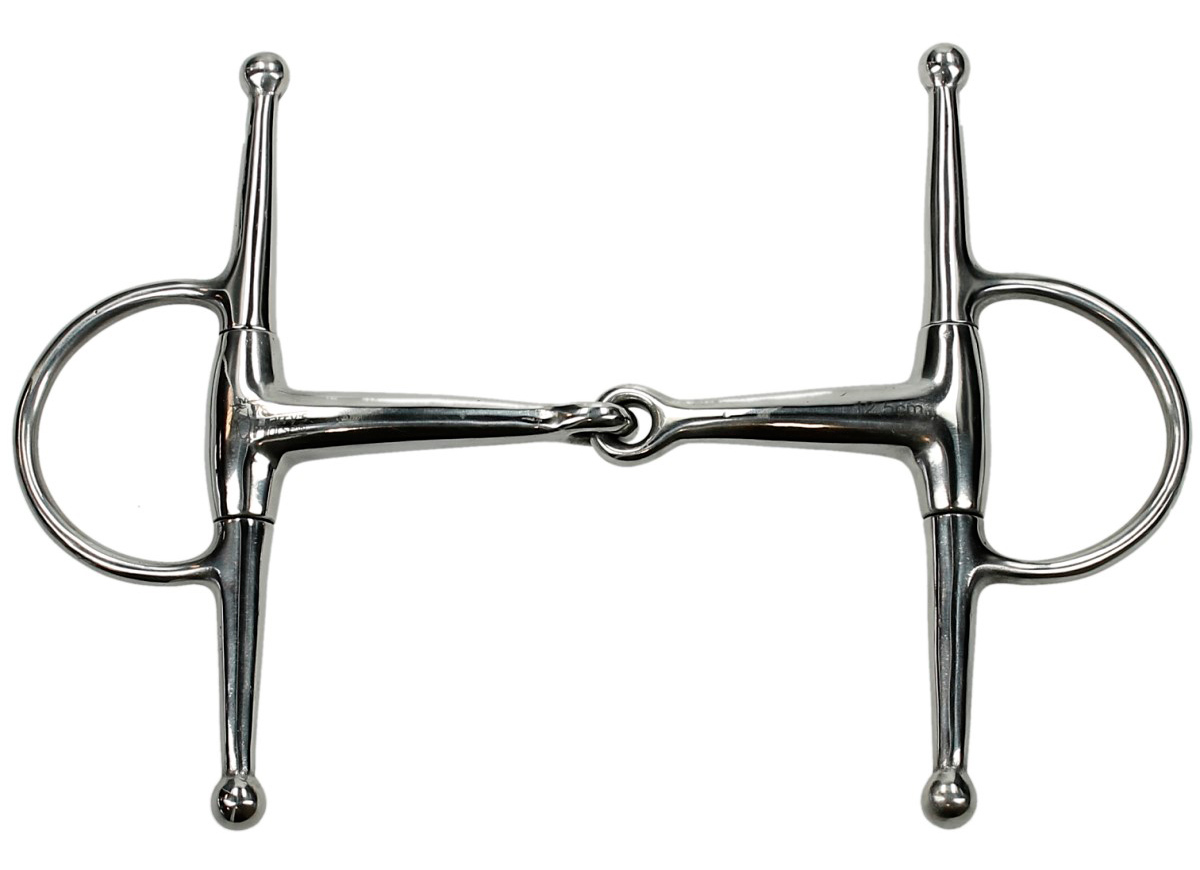
Full Cheek Snaffle Bit
On the other hand, curb bits feature two elements that snaffle bits do not. These are the "shank", or lever arm, and the "purchase" arm, which work by leverage, multiplying the force that is applied when pulling the reins.
Simply put, the difference is that a snaffle bit works on direct pressure, and a curb bit works off of leverage through the shanks, therefore, the pressure it exerts on the mouth is greater.
Let's look at these two types of bits, a Dressage bit and a Pelham bit:
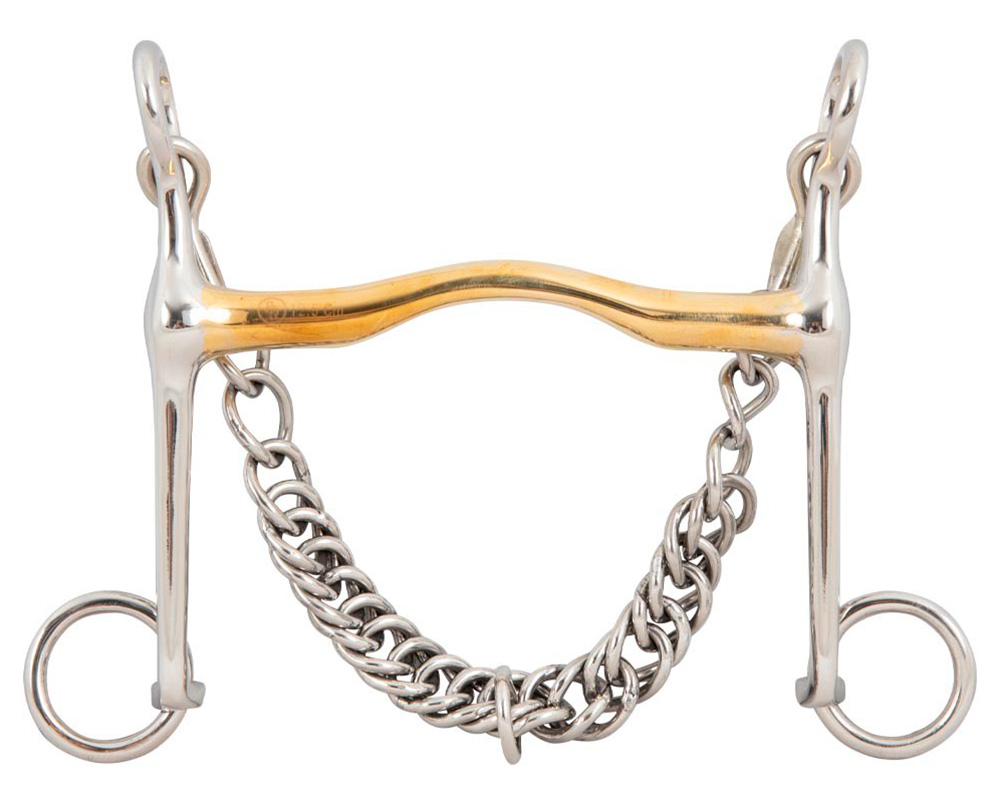
Dressage Bit

Pelham Bit
As you can see, this bit is used with a curb chain. It acts on the bars (bit seat) of the mouth and leverage is applied through the bit shanks and the curb chain. This bit has a harder effect.
In fact, a Pelham is fundamentally a bit that combines both a snaffle action and a curb action.
If we look at the pictures, we will see that there is a ring at the top, which is where the bridle is attached, and a ring for rein attachment at the bottom of the shank.
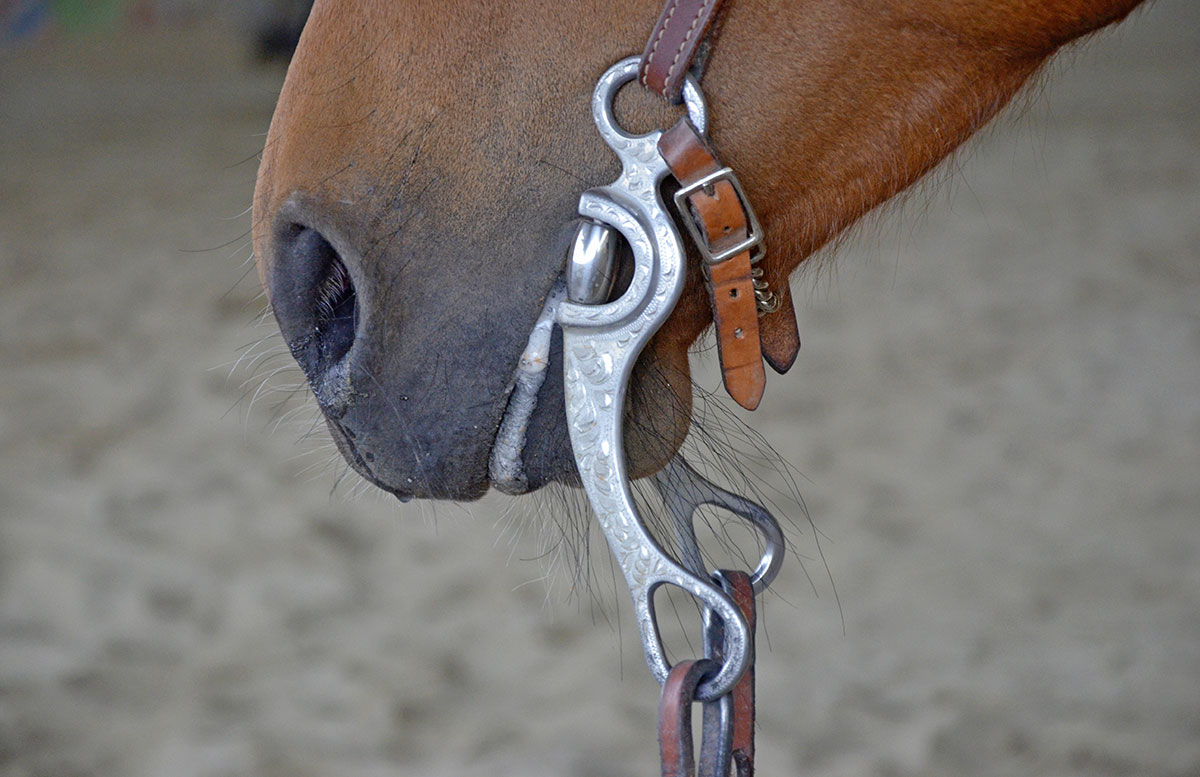
Other types of bits:
Apart from snaffle and curb bits, we have two other types of bits:
- Combination bit (snaffle and curb): it is a combination of both types of bits inside the horse’s mouth. It is often used on horses with a higher level of training.
- Hackamore: it is a bitless bridle since it applies pressure to a curb bit but without the use of a mouthpiece. They consist of two long shanks connected by a noseband and a chinstrap. They are mainly used in horses that do not accept a metal bit in their mouth or in green-broke colts before introduction to a curb bit.
Would you like to be part of a group with an equestrian soul?
Join the Ampascachi Community. Obtain exclusive benefits for your holidays.
We tell you how to start, train and take care of your horse.
Interviews with direct providers of riding tours around the world.
Opinions of outstanding equine scientists and personalities in the equestrian sport world.
How to put the bit and the bridle on a horse?
To put a snaffle or a curb bit in a horse's mouth, we start with the horse safely tied to a pole or ring. In this way, the reins and the headstall won’t entangle around the horse’s legs if he gets frightened and runs away.
- Get the bit (snaffle or curb) and the bridle ready, and pass the reins over the horse’s head.
- Hold the crown of the bridle in your right hand, with your right arm between the horse’s ears and behind the horse’s head. Then, you lift and guide the bridle.
- Use your left hand to place the snaffle /curb bit into the horse’s mouth. If the horse resists taking the bit, insert your thumb into the bars of the mouth and when he opens his mouth wider, we lift the whole bridle.
- Finally, we place the crown of the bridle over the horse’s ears. Check and fasten all the buckles or snaps.
Characteristics of the bits
Size
A well-fitted bit rests comfortably at the corner of the horse’s mouth, whereby the mouthpiece sticks out minimally (between 3 and 5 millimetres) to avoid excess pressure on both sides.
If it is too small, the bit may pinch the lips. And if it is too large, it can slide unstably from side to side and hurt the horse’s palate.
The width varies according to the size of the horse's mouth.
When you adjust the cheek pieces, you should see two soft wrinkles above the corners of the horse’s mouth, when it’s closed, and one wrinkle when the mouth is open.
To determine the length of a bit, we will measure that part of the mouthpiece that rests inside the horse's mouth.
- 100 – 105 mm: Shetland or small ponies
- 11 – 11,5 cm: ponies and horses of less than 60cm at the withers
- 12 – 12,5 cm: medium size or ponies with large heads
- 13 – 13,5 cm: large horses
- 14 – 14,5 cm: horses with large heads or snaffle bits for use with curb bits
- 15 – 15,5 cm: extra-large size (very particular cases)
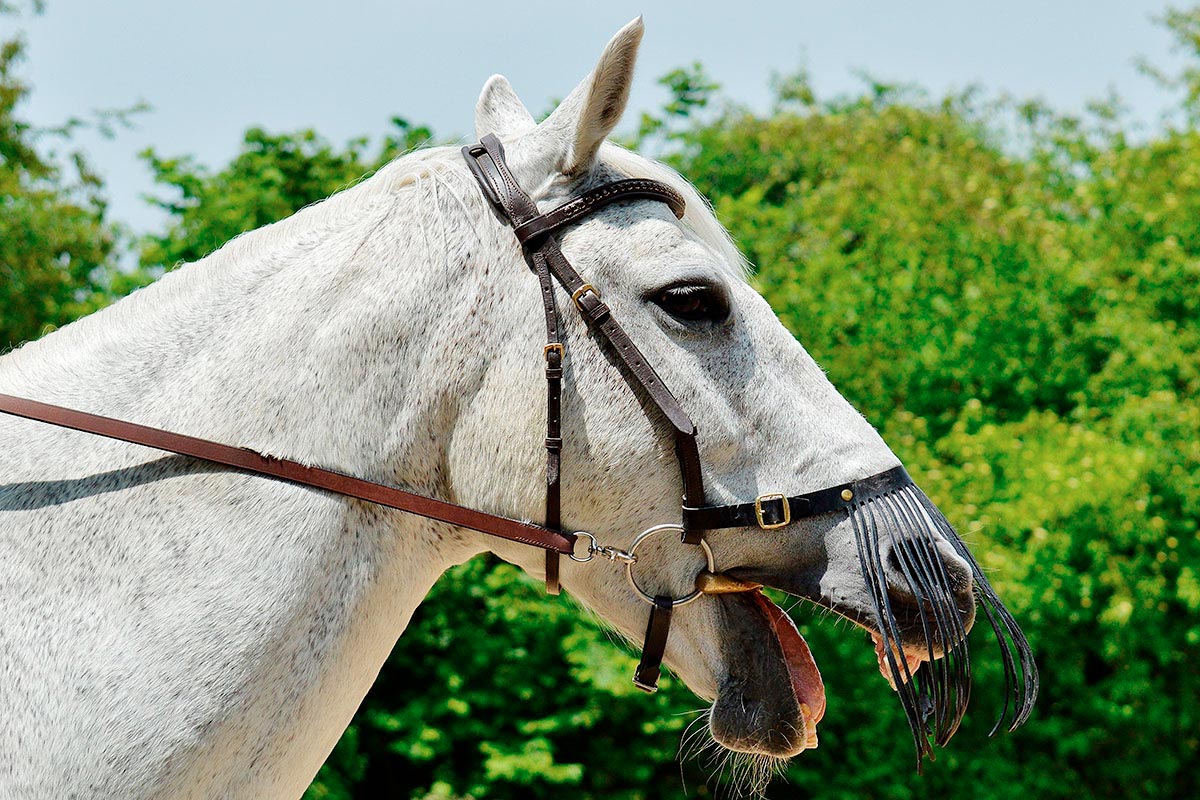
Thickness of the mouthpiece
As we have discussed before, the mouthpiece is the part that rests inside the horse's mouth.
The thickness that we’ll choose will depend on each horse’s type of mouth, the type of activity and the action that the rider's hand exerts, through the rein.
A thicker mouthpiece is milder in action while a thinner mouthpiece delivers a more intense pressure.
The thickness of the mouthpiece increases from 2mm to 2mm:
- Thin: between 8mm and 14mm
- Medium: between 14mm and 18mm
- Thick: between 18mm and 24mm
Types of bit material
The material that a horse bit is made of can encourage acceptance, salivation and the movement of the jaws, in addition to offering a perfect fit to the personality of each horse.
Bits can be made from different materials, which will influence the bitting choice which is right for our horses.
We can classify them into classic, combination or high tech materials.
Within the classic materials, we have:
- Stainless steel: they are very durable and resistant to rusting. Cold metal, for hard-mouthed horses or experts. A durability guarantee.
- Sweet copper: these two materials rust somewhat through use, but in some horses it causes a relaxing effect and they accept the bit much better. This creates a sweet taste in the horse’s mouth which acts to encourage gentle chewing of the bit and salivation. It’s ideal for sensitive and complicated mouths.
- Rubber: it is the classic solution for horses with sensitive mouths. This material has a non-slip action and softens up through salivation and chewing. It is not recommendable for horses that chew on the mouthpiece.
- Plastic: like the rubber bit, it is often a bit softer, which makes it more pleasant for horses. When heated, plastic becomes softer inside the mouth. It is also another good option for sensitive-mouthed horses.
- Blue steel: also known as sweet iron. It is a hypoallergenic, natural alloy of blue colour. It oxidizes quickly, producing a sweet taste that encourages the horse to soften his mouth and accept the bit. Ideal for sensitive horses with a tendency to allergic reactions.
- Happy mouth: it combines rubber and high tech plastics. They are soft and flexible, and come with an apple scent to encourage horses to accept them. Ideal for young horses or horses with sensitive mouths.
- Leather: these bits are suitable for horses with especially sensitive mouths, as they are soft and malleable when immersed in saliva. They encourage acceptance and are ideal for young horses and horses with acceptance problems.
As regards combination materials, they offer a combination of benefits of each alloy and are commonly found in mouthpieces with multiple joints or with wheels.
Finally, high tech materials are new materials based on scientific research performed by world-renowned brands with their own alloys for a much more effective result. We’d like to mention two of them, developed by Sprenger:
- Sensogan: also known as "German silver". It is a bit material patented by Sprenger. Alloy of steel, copper, manganese and zinc, which combines the hardness of a cold material with the sensitivity in preserving the health of the horse's mouth. The copper discharge quantity into the horse’s saliva is reduced considerably, which can be helpful in preventing muscle tension and in supporting stress reduction, and it positively influences the horse’s comfort, concentration and willingness to perform.
- Aurigan: special alloy of copper, zinc and silicone that hardens the copper without influencing the natural oxidation process of pure copper with maximum resistance. Special hard bit to work the horses with snaffle and curb bits.
The shapes of the mouthpiece
The shape and design of the mouthpiece will determine the level of pressure and its location on the horse's mouth.
Some mouthpieces feature a central curve or port that acts on the roof of the horse’s mouth, which allows more tongue freedom.
- Non-joined mouthpiece: it’s a straight or slightly curved solid bar, and it does not have a break in the mouthpiece. It can be milder than a jointed bit thanks to the stability it offers. It acts on the lips, the bars and sometimes on the tongue.
- Joined mouthpiece: a single joint has only one break in the mouthpiece. This traditional mouthpiece is usually milder and engages pressure on the tongue, bars, and roof of the horse’s mouth. It’s not recommendable for horses with a soft, flat or narrow palate as it could cause discomfort in that area.
- Double-joined mouthpiece: two joints. Thanks to its great mobility, this mouthpiece offers a more precise effect than single joints. It’s ideal for horses with rigid neck and jaw. It puts pressure on the tongue and bars.
- Multi-jointed mouthpiece: it features multiple joints or a chain of rounded links. It’s strong and severe on the bars and tongue. This bit also encourages a horse to relax and soften the jaw.
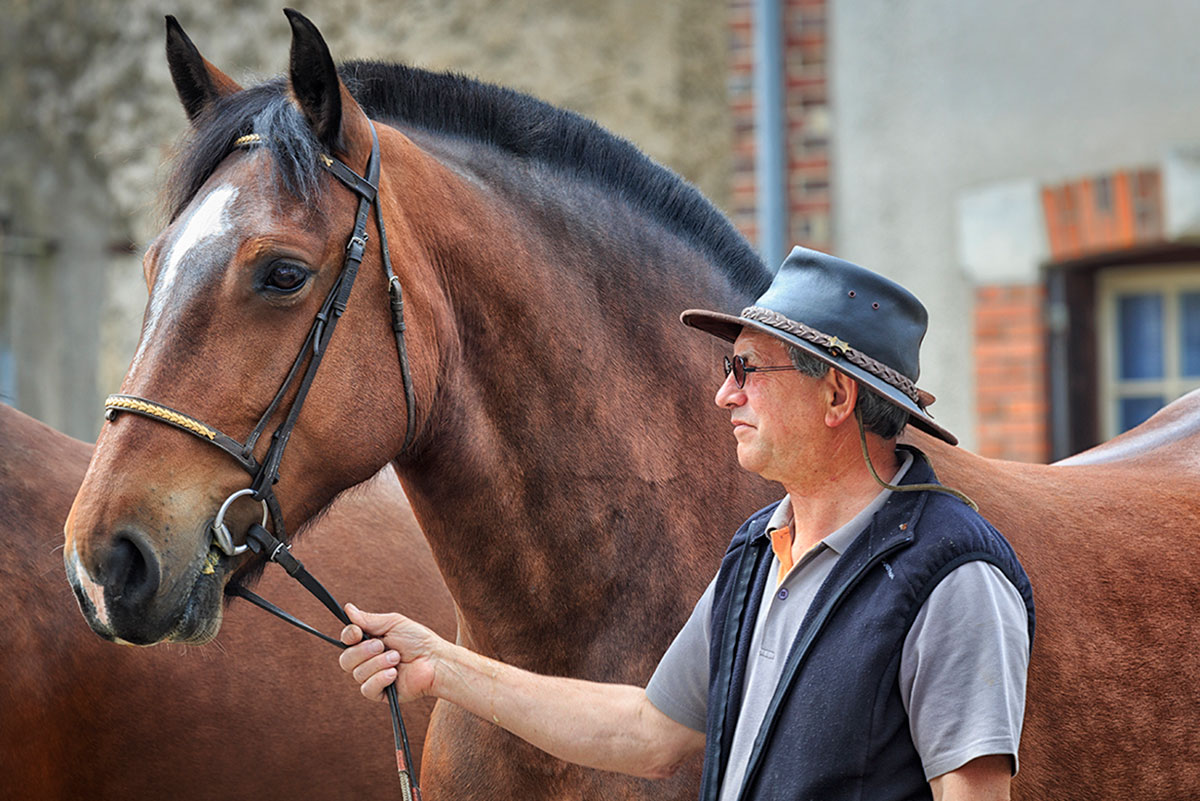
Snaffle bits
How to choose the snaffle bit for your horse
A snaffle bit is a metal bit that consists of a mouthpiece with a ring on either side, which are used as a point of attachment for the cheek pieces of the bridle and for the reins.
The bit is placed above the tongue and rests on the bars or seat, the region between the incisors and molars where there are no teeth. The bit is located on the horse's head by the bridle and a single wrinkle should be formed at the corners of the horse’s mouth.
Through this bit, the horse can learn to understand the rider’s aids in all basic training exercises.
We must try to reduce discomfort in our horse when choosing the snaffle bit.
Finally, bear in mind that an inappropriate bit can damage the horse's mouth. However, in the wrong hands, any bit can be harsh, including snaffles. Excellent horsemanship requires soft, low hands of the rider.
Types of snaffle bits
Always taking into account what was discussed above – thickness, size, material and joint type – we will now list the different types of snaffle bits and their characteristics.
1. Ring Snaffle Bit
It is the most common and simple. The mouthpiece attaches to sliding rings, which size you can choose depending on the riding discipline and the desired leverage. Its effect on the horse's mouth varies according to the material, the thickness and design of the mouthpiece. It’s recommendable for all types of horses.
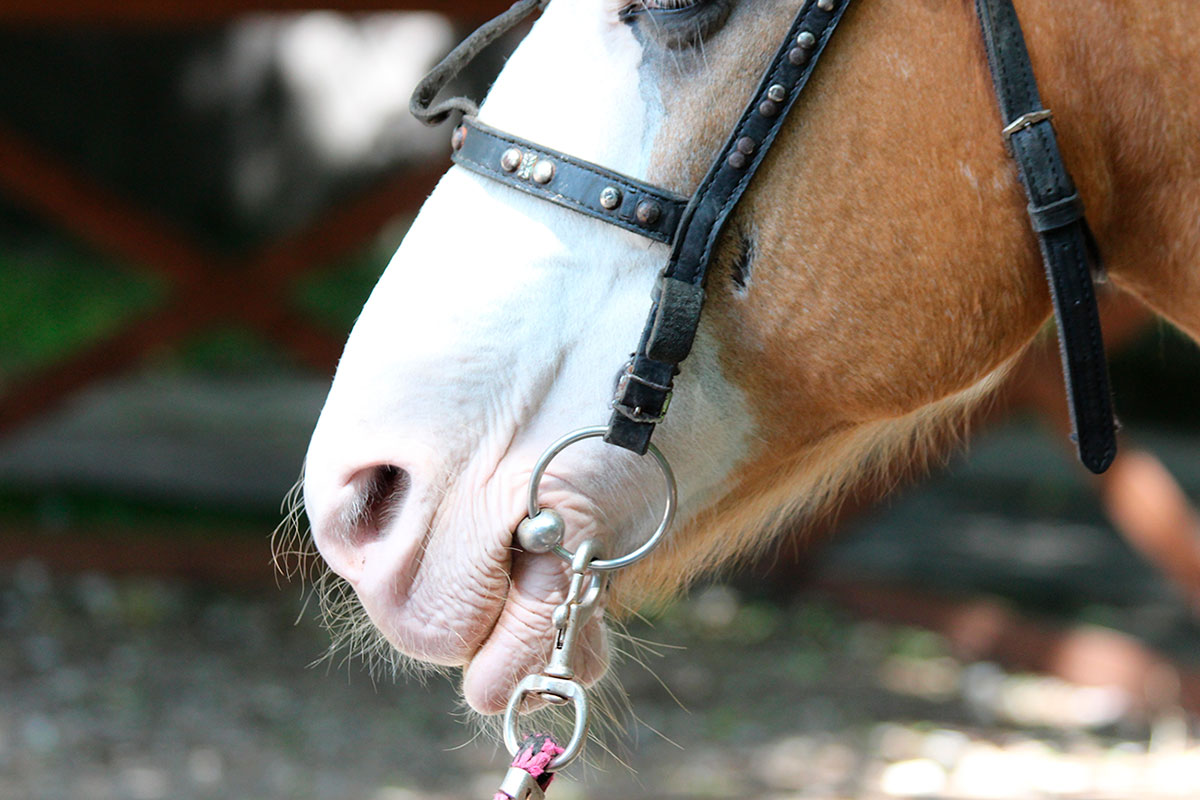
2. Eggbutt Snaffle Bit
This fixed bit is more stable in the horse's mouth. Its fixed rings allow for a subtle harshness increase. The wide ends are very gentle on the bars and won’t pinch the lips. It offers more flexibility to the horse’s neck in circular works and, depending on the mouthpiece, it will increase or decrease the harshness.
3. Full Cheek Snaffle Bit
Similar to the Eggbutt bit. The cheek pieces of the rings stop the bit from sliding through the mouth. It is very useful at the beginning of the training process and its guiding effect makes it popular for use on young horses.
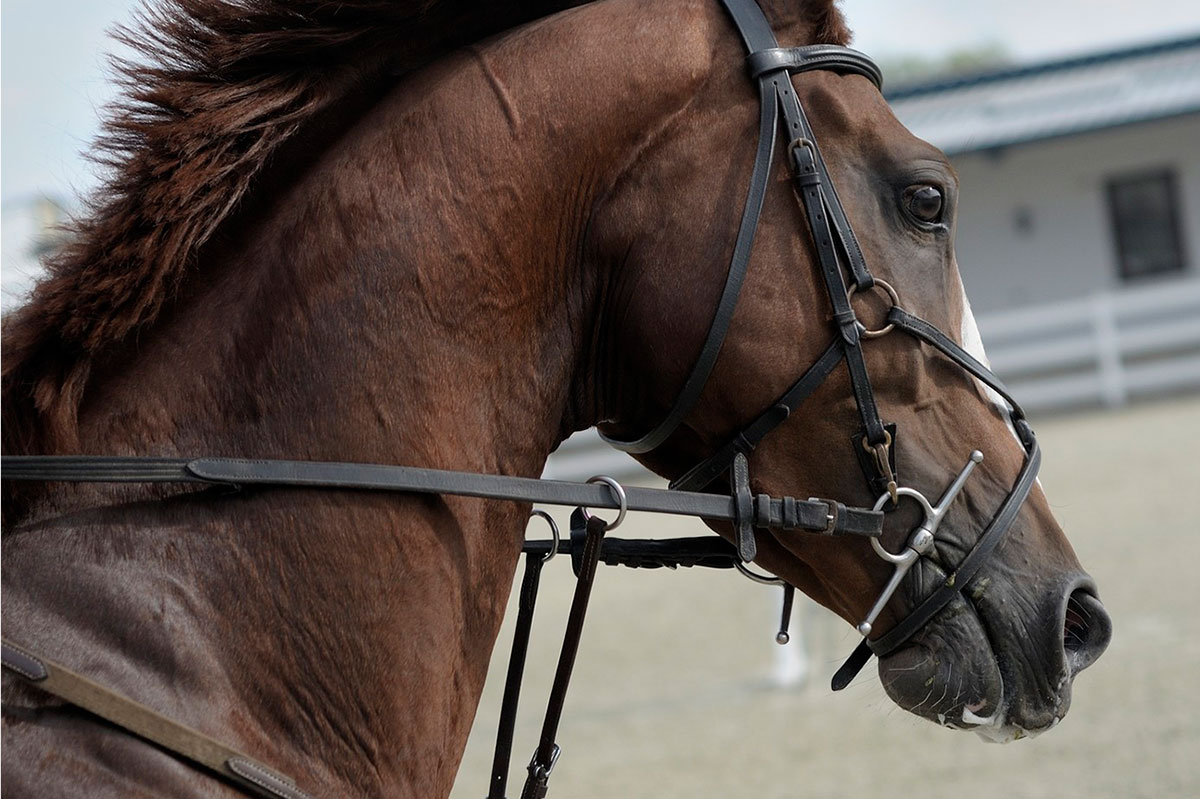
4. Verdun or D-Ring Snaffle Bit
This bit is quite simple and it usually has a thin mouthpiece. It’s very useful when training straightness and turns. It provides a better guiding control in show jumping.
5. Baucher Bit
Widely used in dressage. It has an eggbutt-like ring at the mouthpiece for the rein, with an upper cheek that has a ring at its end, to which the cheek pieces of the bridle are attached allowing greater action on contact. This helps correct bad habits in horses.
6. Elevator Bit
This bit features a lifting accessory on the rings. It has one ring on the upper shank to attach the cheek piece and there is a lower shank, for the rein. It is used with two reins.
In show jumping, it’s suitable for horses that face the jumps with great speed and we want to correct them and make them obey the hand cues.
7. Pessoa Bit
Similar to the elevator. It consists of stacked rings that regulate the lever action. It creates a powerful transition which gives the horse a faster, stronger and clearer signal of what is expected and allows the rider to be in better command of the tempo and manoeuvre.
8. Kimberwick Bit
Similar to the Baucher bit. It has bit shanks, D-shaped rings and a curb chain. Due to its shanks, it is regarded as a type of curb bit. The curb action is minimal to mild, however, because the shanks have short purchase arms and no lever arms. A Kimberwick bit provides the rider with a bit more control of a horse or pony than a snaffle bit. This can be useful for smaller riders or children riding strong horses or ponies. Kimberwicks are seen most commonly being used on ponies.
9. Swivel Bit
This bit is softer and has less leverage. It’s indicated for horses that require a little more action than a simple snaffle bit. It features rings integrated into the regular ring to choose the degree of hardness. If we attach the cheek pieces on the upper ring and the rein on the lower one, we can achieve the maximum lever action that the bit offers.

Subscribe to the Ampascachi Community and obtain benefits and exclusive content. Furthermore, we offer free advice on horses and equestrian tourism.
Curb Bits
How to choose the curb bit for your horse
It’s a type of bit introduced into the horse's mouth used for guiding and controlling horses. This can be an extremely severe bit because it uses lever action so you have to be very careful not to hurt the horse's mouth.
The bit mouthpiece is placed on the horse's tongue and rests on the bars or seat of the horse's mouth which, as we said, is the part of the gums where there are no teeth.
It acts on the jaw, roof of the mouth, tongue, bars and lips.
Basically, it consists of two side pieces (shanks) connected by a central mouthpiece, which goes into the mouth. It also has the following complementary parts: a chain, chain hangers and rein rings.
For the bit to work properly, we must adjust the chain correctly. When holding the reins, the recommendation is that the curb chain should be fixed in a way that an angle of approximately 45 ° between levers and bars occurs.
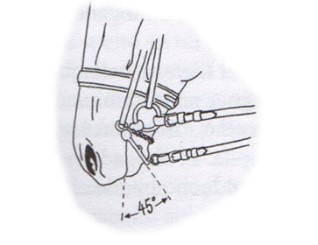
Most curb bits, regardless of their style or the discipline they are used for, have the same parts. The shanks and the rings that connect the bit with the bridle. Together, they add leverage and can amplify rein pressure several times over, depending on the length of the curb's bit shank.
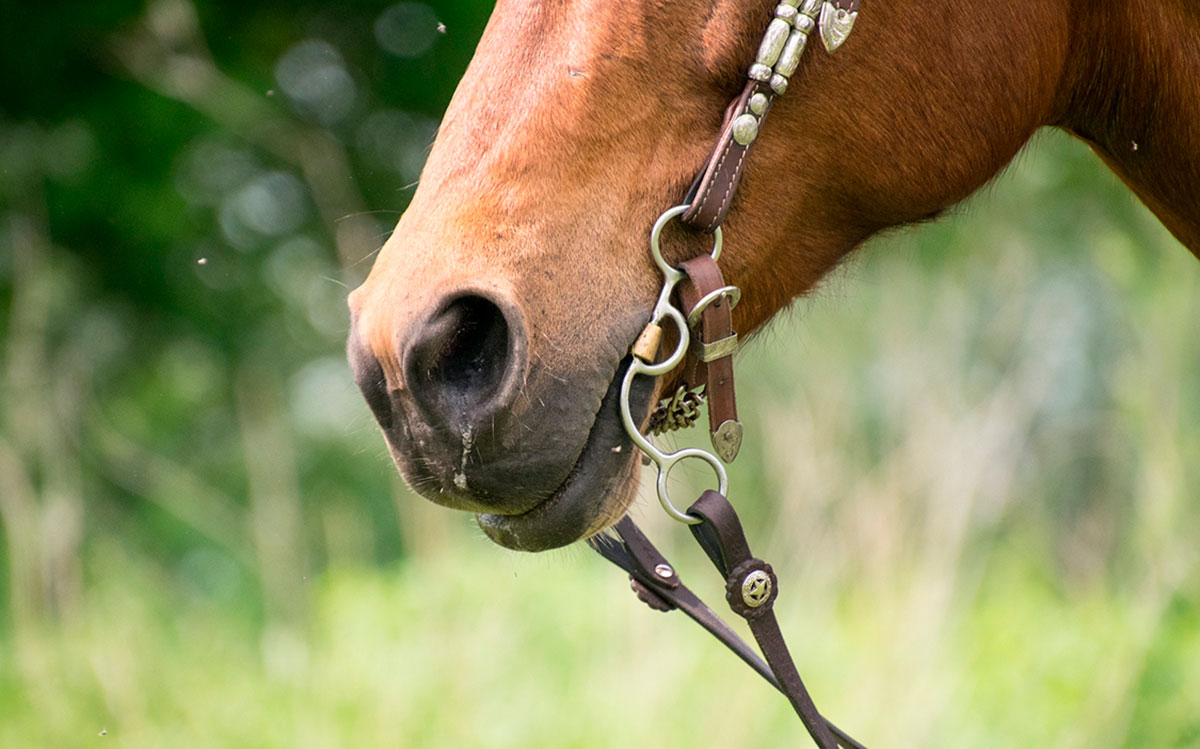
When to start using the curb bit
Curb bits are usually used from very early training.
First the horse must learn to accept the bridle (working headstall with three rings). Then, we move on to the snaffle bit (a full cheek is better at first) and, finally, we introduce the curb bit to fine tune the aids with horses that are more advanced in their training.
Types of curb bits
Curb bits have tremendous variation, according to the type of riding and the region where it is practiced.
Curb bits come in many different styles that all have a different effect on the bit's function and each has different features designed to work in a slightly different way.
1. Dressage Bit
Used mostly in dressage and with some strong show jumping horses. It is a good tool for refined control, but in the wrong hands, it can also be misused and harmful.
There are three types of dressage bits:
- Classic bit
- Cowboy bit
- Western bit
In dressage, this bit is used in combination with a snaffle bit on a double bridle. In the other two cases, it is used individually.
2. Pelham Bit
A Pelham is fundamentally a bit with both a snaffle action and a curb action. The bit and the shank are connected through a small strap (bit converter) where the rein is attached. It can be used with one or two reins, or a bridge that distributes the pressure.
This is the type of bit we use at Ampascachi, because its mouthpiece has a very soft curve that provides room for the horse's tongue and it hardly acts on the roof of the mouth.

This type of bit is used both in groundwork and riding training. We even use it in advanced training, when we teach horses to lengthen their stride in any of their gaits (walk, trot or gallop).
In this last training stage, this bit has a softer effect due to its short shank. So, with a small rein action, the horse will slow down, stop or turn easily.
3. Hackamore
As we discussed at the beginning of this article, it is a very particular headgear since it does not have a bit. It is considered "A bitless bridle".
The Hackamore works through a noseband, which puts pressure on different areas of the horse’s face — except the mouth. Some can work more gently and others with a more severe action, it depends on the length of the shank and the noseband material.
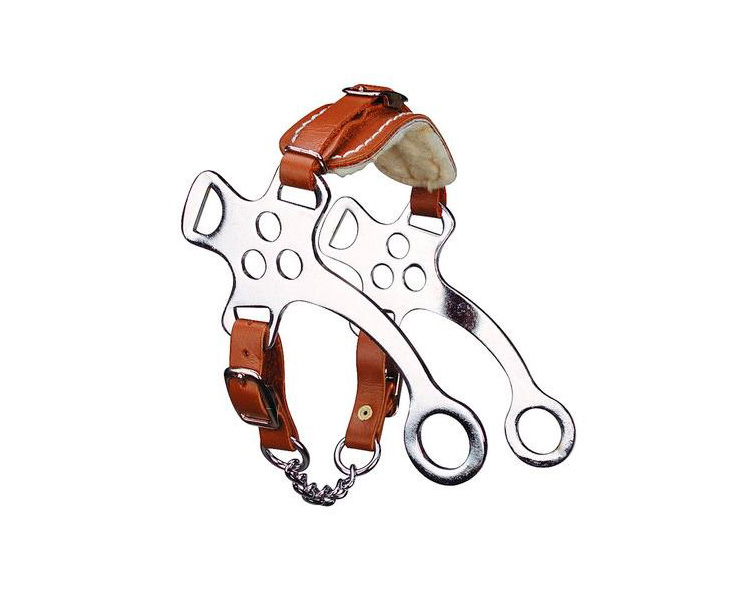
It is suitable for quiet school horses, older horses and horses ridden by inexperienced riders. It’s commonly used in natural horsemanship. It has also been approved in show jumping competitions and it’s sometimes used in dressage but since it hasn’t been approved in this discipline, it cannot be included in competitions.

Conclusion
I would like to end this article with the words of a leading Dutch horseman, Erik Herbermann:
"The best bit is a good seat, good hands and a deep understanding of the principles of horsemanship, which does not depend on human opinions or fashions, but on the nature of the specimen."
We must get our horse to act relaxed and be soft in the mouth. And thanks to the principles of Equitation Science, together with a good bit selection, rider and horse will be able to understand each other in such a way that, with a slight pressure of the rider’s hand, there will be a total understanding.
Therefore, it is important to know each different bit, their characteristics and the use for each type of horse.
We hope that this article has been useful to you and that you have a clearer idea about all these aspects.
Do you love horses and want to learn more about horse training?
Download our free guide on Horse training step by step. There we tell you everything we have learned about horse training in more than 25 years of experience.
And if you want to be a professional horse trainer and get field-based training, you should check out our training program. You will have the opportunity to live in our equestrian centre and experience our full training process with young horses.
~
THIS COULD ALSO BE INTERESTING

How are horses bred and trained at Ampascachi?
Ampascachi specializes in Equestrian Tourism in Argentina. We offer visiting Argentina, riding a Peruvian Paso Horse which we breed, start and train.
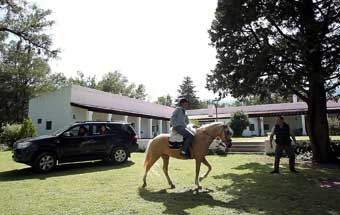
Planning a horseback riding route
You need to take into consideration various aspects when planning a riding route, especially the trails that must be comfortable for riders and horses.

Horse riding in the Calchaquí Valley
Enjoy a horse riding holiday in Argentina, in the province of Salta, visiting the villages of the Calchaquí Valley and their natural treasures.
~
WHAT IS YOUR OPINION? LEAVE A COMMENT
Your comments
Very clearly explained, I liked the content a lot.
Planning your horse riding holidays?
Join the Ampascachi Community. You will get exclusive advantages and guidance for your next horse riding holiday.


 German
German French
French Spanish
Spanish